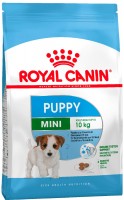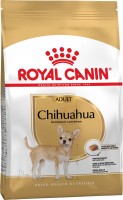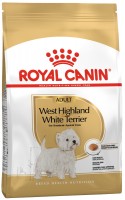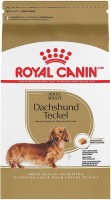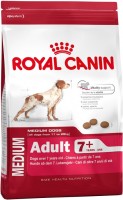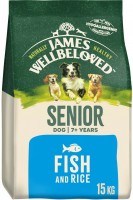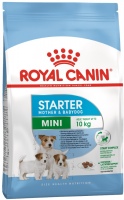Dog Food Happy Dog
All Dog Food Advanced filters → |
You might be interested in
Dog Food: specifications, types
Type
- Dry food. Feed having the appearance of characteristic granules. Their main advantages are ease of use and storage, ease of dosage, as well as profitability: “drying” is more nutritious than canned food, which allows you to manage with smaller portions, and besides, it can be sold in large packages. Some believe that such food is harmful to the dog and is less digestible than canned food; but high-quality dry food will definitely not do any harm, the main thi...ng is that the pet has constant access to drinking water.
- Canned food. Canned food, unlike dry food, contains a significant amount of water and usually has a soft texture. Due to this, it is believed that they are absorbed and digested better than “drying”. On the other hand, canned food is more expensive and not very convenient from a purely household point of view: an open jar or package cannot be stored for a long time.
- Milk substitutes. A special food that satisfies the needs of small puppies as much as possible, if for some reason they cannot get natural mother's milk. Depending on the specific product, it can be used from the first day of life until the time the puppy is weaned (about 3 weeks).
- Delicacy. As the name suggests, treats are not meant to be fed all the time, but to pamper your pet. One of the options for using such feeds is to encourage training; however, nothing prevents giving treats just like that, "to cheer up." In addition, specialized (therapeutic, preventive, fortified) delicacies are also produced. Note that you need to give treats little by little; specific quantity limits are usually indicated on the packaging.
- Canned food. Canned food, unlike dry food, contains a significant amount of water and usually has a soft texture. Due to this, it is believed that they are absorbed and digested better than “drying”. On the other hand, canned food is more expensive and not very convenient from a purely household point of view: an open jar or package cannot be stored for a long time.
- Milk substitutes. A special food that satisfies the needs of small puppies as much as possible, if for some reason they cannot get natural mother's milk. Depending on the specific product, it can be used from the first day of life until the time the puppy is weaned (about 3 weeks).
- Delicacy. As the name suggests, treats are not meant to be fed all the time, but to pamper your pet. One of the options for using such feeds is to encourage training; however, nothing prevents giving treats just like that, "to cheer up." In addition, specialized (therapeutic, preventive, fortified) delicacies are also produced. Note that you need to give treats little by little; specific quantity limits are usually indicated on the packaging.
Type of treat
The variety to which the treat belongs (see “Type”).
— Snacks. Delicious treats for dogs that supplement the daily diet with useful substances, improve digestion and lift the tail's mood. Snacks are available in hard and crunchy textures, as well as soft and chewy treats. It is recommended to pamper your pet with them when training and practicing commands, in stressful situations,...in order to distract the dog or praise it for good behavior. There are even special “training” treats available, although, of course, treats can be given to your pet just like that.
- Sticks. Treats in the form of chewing sticks or sausages with a hard texture. The sticks will appeal to dogs who like to crunch. Most often, such treats are used to prevent tartar, clean teeth from plaque and improve digestion.
- Bones. The bone-shaped chewy goodies are made from compressed tendons with the addition of various meat flavors and vitamins. By gnawing on such treats, your pet strengthens its teeth and gums, thereby preventing the formation of tartar.
— Natural dryers. Treats intended primarily for chewing. The main ingredient in such treats is dried rawhide, sometimes meat is added to it. A dog can “torment” natural drying for hours.
— Snacks. Delicious treats for dogs that supplement the daily diet with useful substances, improve digestion and lift the tail's mood. Snacks are available in hard and crunchy textures, as well as soft and chewy treats. It is recommended to pamper your pet with them when training and practicing commands, in stressful situations,...in order to distract the dog or praise it for good behavior. There are even special “training” treats available, although, of course, treats can be given to your pet just like that.
- Sticks. Treats in the form of chewing sticks or sausages with a hard texture. The sticks will appeal to dogs who like to crunch. Most often, such treats are used to prevent tartar, clean teeth from plaque and improve digestion.
- Bones. The bone-shaped chewy goodies are made from compressed tendons with the addition of various meat flavors and vitamins. By gnawing on such treats, your pet strengthens its teeth and gums, thereby preventing the formation of tartar.
— Natural dryers. Treats intended primarily for chewing. The main ingredient in such treats is dried rawhide, sometimes meat is added to it. A dog can “torment” natural drying for hours.
Quantity
The number of packages, cans per package, or individual pieces in a package of treats (servings of treats). Knowing the amount and rate of consumption of feed, you can roughly estimate how long the package will last.
Packing
- Tin can. A tin or aluminium container for long-term storage of canned dog food that is completely sealed until opened. For ease of opening, a special key is usually provided in the design of the lid of cans.
- Package (pouch). Soft packaging for canned food, which is a small bag of foil and polyethylene with notches at the top for easy opening. As a rule, small portions of food (about 75-100 g) are packaged in spid...ers. It can be chopped pieces of meat with vegetables, sauce or broth, pates and jelly.
- Foil container. Trays made of food-grade aluminium foil (lamisters) are designed for storing feed in the form of pates and soufflés. From above, the trays are sealed with a foil lid or film. The volume of the contents of the foil container usually does not exceed 400 g.
- Glass jar. Minced meat, pieces in jelly, sauce or broth are placed in glass jars. Such a container is closed with a tin screw-on lid. The contents are clearly visible through the walls of the glass jar, but the food in this package should not be stored in direct sunlight.
- Package (pouch). Soft packaging for canned food, which is a small bag of foil and polyethylene with notches at the top for easy opening. As a rule, small portions of food (about 75-100 g) are packaged in spid...ers. It can be chopped pieces of meat with vegetables, sauce or broth, pates and jelly.
- Foil container. Trays made of food-grade aluminium foil (lamisters) are designed for storing feed in the form of pates and soufflés. From above, the trays are sealed with a foil lid or film. The volume of the contents of the foil container usually does not exceed 400 g.
- Glass jar. Minced meat, pieces in jelly, sauce or broth are placed in glass jars. Such a container is closed with a tin screw-on lid. The contents are clearly visible through the walls of the glass jar, but the food in this package should not be stored in direct sunlight.
Dog breed
Each breed of dog has its own physiological characteristics of the body and dietary requirements. Feeds for certain breeds of pets take into account the weight and height of the dog, the length of the coat, the genetic predisposition to various diseases or obesity, and other factors. Breed-specific food provides for all these aspects - the pet receives exactly the diet that provides him with health and energy.
Age
The age for which the food is intended.
Dogs of different ages have different nutritional needs. So, puppies need easily digestible food with a lot of "building material" for growth. It is for puppies that the largest number of nutritional gradations by age has been introduced (from 1 month, 8 months, 12 months, etc.). Young animals require a lot of energy, and in old age it is not uncommon for dental problems to develop. All this is taken into acco...unt when creating feed.
Age categories are most often distinguished as follows:
- Puppies - from 2 weeks to 2 - 3 months.
- Young(juniors) - from 2 - 3 months to 10 - 12 months.
- Adults - from a year to 6 - 8 years, depending on the breed and characteristics of the body.
- Elderly - from 6 - 8 years.
Note that this classification is rather arbitrary, and in some brands of food, the age limits may be different - for example, food for puppies may have the designation "up to 5 - 6 months." These details should be specified separately, especially if the dog is in a “transitional” age, between categories.
Dogs of different ages have different nutritional needs. So, puppies need easily digestible food with a lot of "building material" for growth. It is for puppies that the largest number of nutritional gradations by age has been introduced (from 1 month, 8 months, 12 months, etc.). Young animals require a lot of energy, and in old age it is not uncommon for dental problems to develop. All this is taken into acco...unt when creating feed.
Age categories are most often distinguished as follows:
- Puppies - from 2 weeks to 2 - 3 months.
- Young(juniors) - from 2 - 3 months to 10 - 12 months.
- Adults - from a year to 6 - 8 years, depending on the breed and characteristics of the body.
- Elderly - from 6 - 8 years.
Note that this classification is rather arbitrary, and in some brands of food, the age limits may be different - for example, food for puppies may have the designation "up to 5 - 6 months." These details should be specified separately, especially if the dog is in a “transitional” age, between categories.

